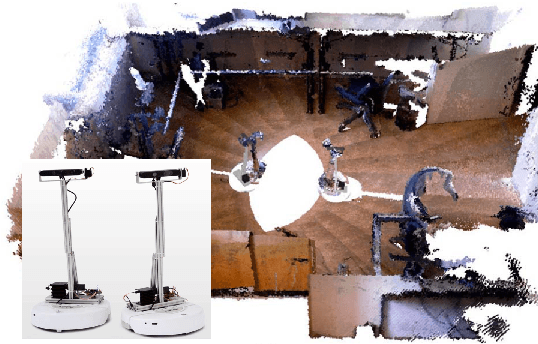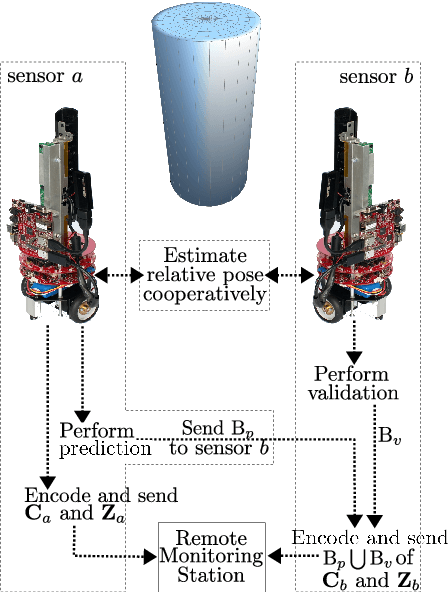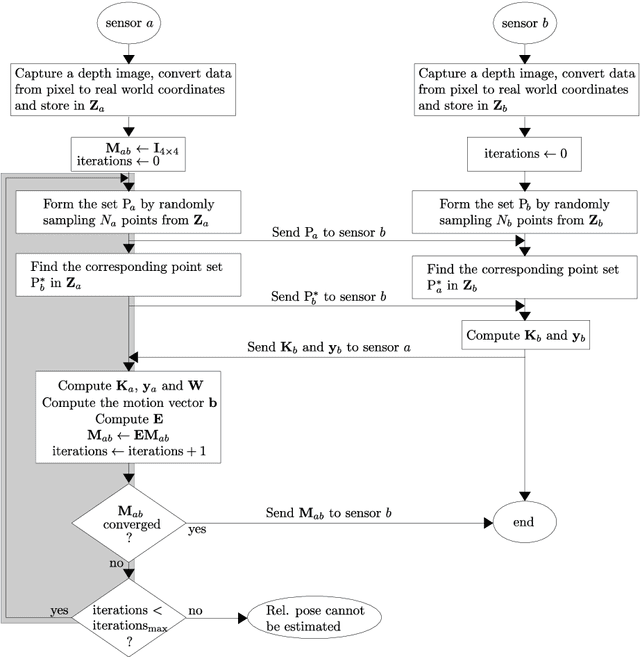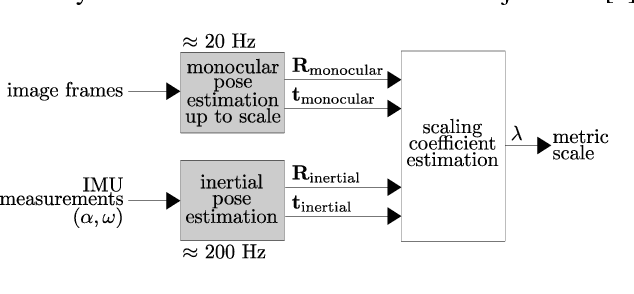Y. Ahmet Sekercioglu
Relative Pose Based Redundancy Removal: Collaborative RGB-D Data Transmission in Mobile Visual Sensor Networks
Feb 27, 2018



Abstract:The Relative Pose based Redundancy Removal(RPRR) scheme is presented, which has been designed for mobile RGB-D sensor networks operating under bandwidth-constrained operational scenarios. Participating sensor nodes detect the redundant visual and depth information to prevent their transmission leading to a significant improvement in wireless channel usage efficiency and power savings. Experimental results show that wireless channel utilization is improved by 250% and battery consumption is halved when the RPRR scheme is used instead of sending the sensor images independently.
A Loosely-Coupled Approach for Metric Scale Estimation in Monocular Vision-Inertial Systems
Oct 09, 2017



Abstract:In monocular vision systems, lack of knowledge about metric distances caused by the inherent scale ambiguity can be a strong limitation for some applications. We offer a method for fusing inertial measurements with monocular odometry or tracking to estimate metric distances in inertial-monocular systems and to increase the rate of pose estimates. As we performed the fusion in a loosely-coupled manner, each input block can be easily replaced with one's preference, which makes our method quite flexible. We experimented our method using the ORB-SLAM algorithm for the monocular tracking input and Euler forward integration to process the inertial measurements. We chose sets of data recorded on UAVs to design a suitable system for flying robots.
Diagnosing client faults using SVM-based intelligent inference from TCP packet traces
Jul 16, 2012



Abstract:We present the Intelligent Automated Client Diagnostic (IACD) system, which only relies on inference from Transmission Control Protocol (TCP) packet traces for rapid diagnosis of client device problems that cause network performance issues. Using soft-margin Support Vector Machine (SVM) classifiers, the system (i) distinguishes link problems from client problems, and (ii) identifies characteristics unique to client faults to report the root cause of the client device problem. Experimental evaluation demonstrated the capability of the IACD system to distinguish between faulty and healthy links and to diagnose the client faults with 98% accuracy in healthy links. The system can perform fault diagnosis independent of the client's specific TCP implementation, enabling diagnosis capability on diverse range of client computers.
 Add to Chrome
Add to Chrome Add to Firefox
Add to Firefox Add to Edge
Add to Edge